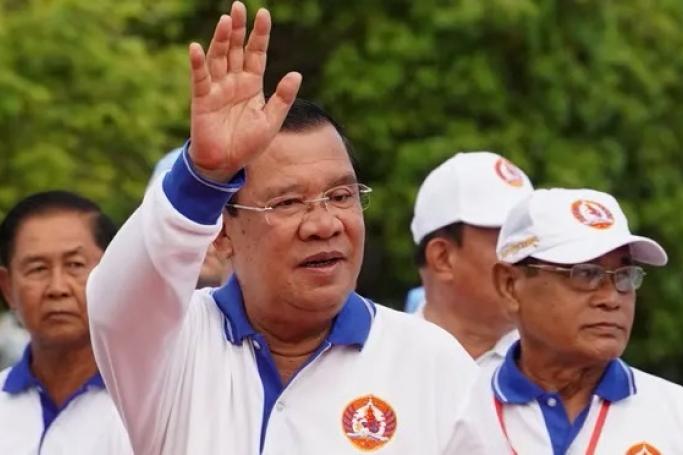AFP
Cambodians vote Sunday in an election lacking any credible opposition to Prime Minister Hun Sen, who has maintained an iron grip on the kingdom since first becoming leader in 1985.
The 70-year-old is now one of the world's longest-serving leaders, and has vowed to hand over power to his son after the one-sided poll.
Here are key dates in Hun Sen's life, from his youth as a Khmer Rouge cadre and his early political rise, to the quashing of his political opposition and plans for a dynastic power transfer:
- 1952-77: Revolution and genocide –
Hun Sen is born in 1952 in a small rural district on the Mekong river.
As a teenager, he joins the Khmer Rouge movement in response to a 1970 coup by defence chief Lon Nol that ousts the government of monarch and independence leader Norodom Sihanouk.
Five years later the communist guerrillas seize Phnom Penh, empty the capital of its residents and establish a murderous Maoist dystopia that wipes out a quarter of Cambodia's population.
Hun Sen flees to neighbouring Vietnam in 1977, fearing the worsening purges enveloping the regime at the time.
- 1979-91: Rise to power –
In January 1979 he is among the Vietnamese-backed forces that drive the Khmer Rouge from Phnom Penh. He is appointed foreign minister in the new government installed by Hanoi.
After six years he is installed as prime minister, aged just 32.
War rages in the countryside with insurgencies led by royalist and remnant Khmer Rouge forces, but Vietnam withdraws the troops propping up Hun Sen's government in 1989 after a decade-long occupation.
The warring factions sign the Paris Peace Agreements in 1991, committing them to resolve their conflict through a peaceful multi-party election under the auspices of UN peacekeepers.
- 1993-97: Setback and triumph –
The Cambodian People's Party loses 1993 elections to the royalist FUNCINPEC party, though neither have a majority in the new parliament and are forced into an uneasy alliance.
Hun Sen takes the post of Second Prime Minister, ostensibly governing in concert with the king's son, Norodom Ranariddh.
But in 1997, he leads a bloody coup that kills dozens of FUNCINPEC officials and ousts Ranariddh from government.
The same year a deadly grenade attack kills at least 16 people at a rally for emerging opposition leader Sam Rainsy. Hun Sen has repeatedly denied accusations of masterminding the attack.
- 1998-2012: Reckoning with the past –
Khmer Rouge leader Pol Pot dies in 1998 while under house arrest in one of the movement's few remaining redoubts near the Thai border.
Remaining soldiers agree to disarm or defect to Hun Sen's government, finally ending decades of civil war.
In 2003, Hun Sen's government agrees to a joint international tribunal with the United Nations to put surviving Khmer Rouge leaders on trial.
Kaing Guek Eav, better known as Duch, receives a life term for his role as head jailer in Phnom Penh's notorious S-21 detention centre, where thousands were killed after brutal interrogations.
Two other leaders will eventually also be jailed, while two others die before facing justice.
Hun Sen's government refuses to permit the court to investigate other cases, and it closes down a decade after its first verdict.
- 2013-23: One-party rule –
Hun Sen's CPP claims a narrow victory over Sam Rainsy's Cambodia National Rescue Party (CNRP) in 2013 elections, sparking protests in Phnom Penh.
A police crackdown ends months of opposition rallies the following year.
The party is dissolved by the Supreme Court in 2017 and many of its lawmakers flee the country.
The CPP sweeps all 125 lower house seats in 2018 elections that lack genuine opposition, drawing international condemnation.
Hun Sen announces in 2021 that he will back Hun Manet, his eldest son, to replace him when he retires.
The most senior opposition leader remaining in the country, Kem Sokha of the CNRP, is sentenced to 27 years in prison on treason charges in 2023.
AFP












